#Otolaryngology
Text
Scientists Develop a New Promising Treatment for Tinnitus
A University of Michigan study has found that personalized bi-sensory stimulation, combining individual tinnitus spectrums and electrical stimulation, can significantly reduce tinnitus symptoms, improving quality of life. This method, which will be commercialized by Auricle Inc., offers new hope for effective treatment for millions of tinnitus sufferers.
4 notes
·
View notes
Text
the ENT says i have a

follow me for more otolaryngology memes
2 notes
·
View notes
Text

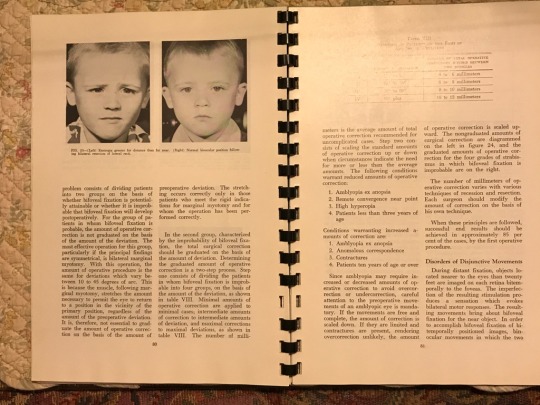



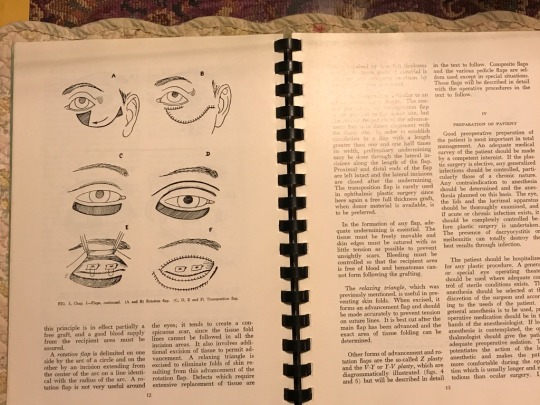


Books for Sale ~Glen Gibson 1961 Sensorimotor Anomalies of Extrinsic Ocular Muscles + Surgery | eBay https://www.ebay.com/itm/385324297102 #AmericanAcademy #Ophthalmology #Otolaryngology #plasticsurgery #eye #humaneyes #medicalstudies #vintage #books #forsale #eyehealth #vision #rarebooks #bookshop #ventura #medicine #surgery #history
#Books for Sale ~Glen Gibson 1961 Sensorimotor Anomalies of Extrinsic Ocular Muscles + Surgery | eBay https://www.ebay.com/itm/385324297102#AmericanAcademy#Ophthalmology#Otolaryngology#plasticsurgery#eye#humaneyes#medicalstudies#vintage#books#forsale#eyehealth#vision#read#book shop#rare books#book buyers#bookseller#reading#rarebooks#medical books#medicine
2 notes
·
View notes
Text
MMW through med school: lessons from ENT
Parathyroidectomies are not to be trusted. Sometimes they can be these wonderfully short, satisfying procedures (30-45min), or so I’m told. The other option is they last hours and hours. So far I’ve only seen cases of the latter.
Retracting is actually quite important because ENT surgeries happen in small spaces/incisions. Yay, I’m helping!
Neck muscle anatomy is still an area for personal improvement.
Hope y’all are well. The main point of this post was to warn you about parathyroidectomies. I suggest having a snack nearby and being ready to ask for a break to hydrate and eat if you have one on your schedule.
#medblr#medicine#medical#med school#mmw#mmw through med school#ent#otolaryngology#parathyroid#parathyroidectomy#surgery#clinical rotations
10 notes
·
View notes
Text
Residency Update
Hey everyone! Long time no write (like since PGY1).
Just wanted to let everyone who is still here know... I'm about to be a PGY5! And I have matched to an AMAZING laryngology fellowship! So after chief year, I will be specializing in voice, airway, and swallowing disorders. I'm so excited about finishing up residency and moving forward with the next phase of my career!
I'm hoping to be more active here again, but I have to be careful because Duke has pretty strict social media rules.
#if you really want to keep up with me#follow me on insta#way more active there#laryngology#otolaryngology#ENT#shENT#fellowship match
6 notes
·
View notes
Text
EU Backs First Oral Monotherapy for Adults With PNH
The European Medicines Agency (EMA) has granted a marketing authorization to Novartis Europharm for Fabhalta (iptacopan) for treating adults with paroxysmal nocturnal hemoglobinuria (PNH) who have hemolytic anemia.
The decision was hailed as a first step toward enabling patient access in European Union countries following a March 21 meeting of the Committee for Medicinal Products for Human Use…
View On WordPress
#anemia; anaemia#biologic therapy#biologics#Blood transfusion#ENT specialty#Europe#European#Hb#Hb - hemoglobin#head and neck surgery; ENT speciality#Hemoglobin#hemoglobin Hgb#hemolytic anemia; haemolytic anaemia#otolaryngology#paroxysmal nocturnal haemoglobinuria#paroxysmal nocturnal hemoglobinuria#Paroxysmal nocturnal hemoglobinuria (PNH)#PNH - paroxysmal nocturnal hemoglobinuria
0 notes
Text
Best ENT Clinics in Qatar

Being one of the best ENT clinics Al Emadi Hospital have a group of professional ENT specialists with a focus on all treatments for ear, nose, and throat-related discomforts and providing you with a happy and comfortable life.
#ent#medicine#doctor#surgery#medical#otolaryngology#orl#rhinoplasty#otorrino#hearingloss#otorrinolaringologia#earnosethroat#pathology#health#audiology#physiology#ear#nosejob#microbiology#radiology#biochemistry#nose#pharmacology#facialplasticsurgery#audiologist#otolaryngologist#rinoplastia#hearingaids#tinnitus#obstetrics
0 notes
Text
Expert Solutions for ENT Health
Seeking relief from ear, nose, or throat discomfort? Look no further! Our distinguished ENT specialist brings years of experience

#ENT specialist#Ear#nose#and throat health#Hearing loss#Sinusitis#Voice disorders#Allergies#ENT care#Otolaryngology
0 notes
Text
Otoscope
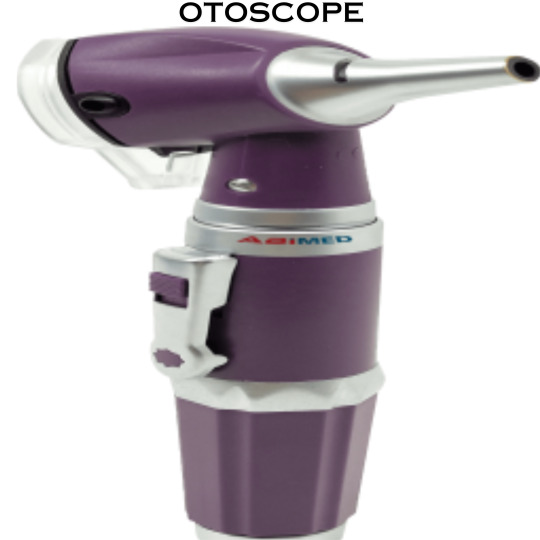
An otoscope is a medical device used by healthcare professionals to examine the external auditory canal, eardrum, and middle ear. It is commonly used in primary care, otolaryngology (ENT), pediatrics, and emergency medicine settings to assess ear health and diagnose various ear-related conditions. Wide viewing window for detailed examination
0 notes
Text
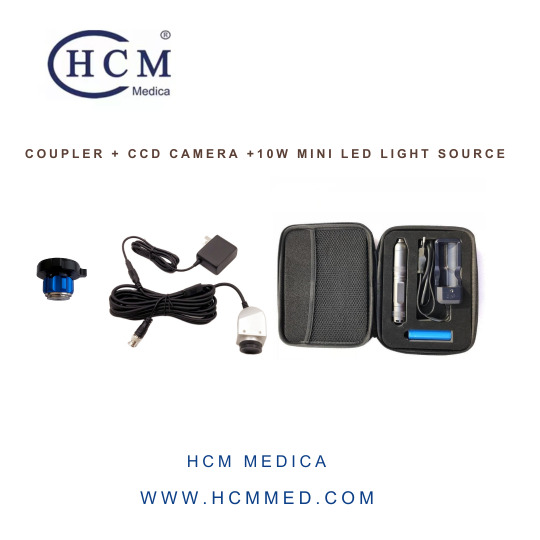

Portable endoscope CCD Camera with led light source
The CCD Camera is mainly used for ENT examination, It is only for diagnosis, no video capture or any memory card.
It is also a kind of camera that works directly, no need to work with your camera.
This portable endoscope light source is 10W, works with lithium battery, very small, easy to carry, and it could be connected to rigid endoscope and flexible endoscope.
Super high intensity, doctors could use it for both ENT diagnosis and operation, it will show you very clear image on the monitor if you use this product for throat operation, it works for arthroscopy too.
所有心情:
0 notes
Text

Best ENT Hospital in Surat.
Best ENT Hospital in Surat. As we all know, "A healthy outside starts from the inside," yet maintaining our inside health takes the highest level of care. You will have to deal with symptoms or issues that affect your ears, nose, or throat at some point in your lifetime. Problems with the ears, nose, and throat have historically gone untreated since they frequently do not result in any physical or aesthetic impairment, and by the time they are, they have progressed irreversibly. Because we firmly believe that it is better to be early than late, Satva Hospital offers its patients the best care and amenities.
What is ENT (otolaryngology)?
Otolaryngology, sometimes known as ENT, is a branch of medicine that focuses on treating conditions affecting the ears, nose, and throat. For any health issues involving these organs, ENT experts are often educated and offer both medicinal and surgical treatments. Otolaryngologists most frequently treat hearing loss, ear infections, balance issues, ear noise (tinnitus), nerve discomfort, and issues with the face and cranial nerves. Additionally, ENT specialists have received training in the diagnosis and treatment of allergies, sinusitis, odors disorders, polyps, and nasal obstruction brought on by a deviated septum.
Additionally, they can treat infectious diseases, benign and malignant tumors, facial trauma, and facial deformities in addition to diseases of the larynx (voice box) and the upper digestive tract, which include voice and swallowing disorders. You should contact Pristine Care if you suffer from any throat, nose, or ear conditions. The greatest ENT experts in Surat are on staff at Satva Hospital, and they have a wealth of knowledge and experience.
In this contemporary region of Surat, Satva Hospital has the top ENT specialist’s physicians, and we offer the best therapies in addition to the technology and facilities.
0 notes
Text
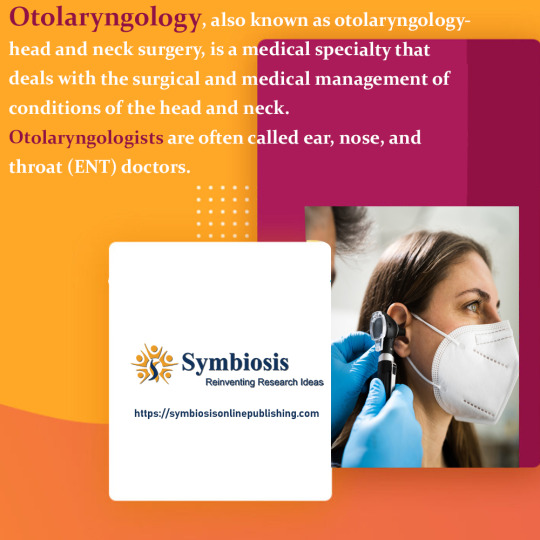
𝟏. 𝐒𝐜𝐨𝐩𝐞 𝐨𝐟 𝐏𝐫𝐚𝐜𝐭𝐢𝐜𝐞: Otolaryngologists diagnose and treat a wide range of medical conditions affecting the ear, nose, throat, head, and neck. This includes both medical and surgical management of these conditions.
𝟐. 𝐄𝐚𝐫 𝐃𝐢𝐬𝐨𝐫𝐝𝐞𝐫𝐬: Otolaryngologists deal with conditions of the ear, including hearing loss, ear infections, tinnitus (ringing in the ears), balance disorders, and congenital ear abnormalities.
Visit: https://symbiosisonlinepublishing.com/otolaryngology/
#otolaryngology#otolaryngologist#otology#rhinology#neurootology#laryngology#voicedisorders#speechscience#headoncology#neckoncology#allergytesting#immunotherapy#facialplasticsurgery#reconstructivesurgery#audiology#peadiatricotolaryngology#tonsillectomy#facelift#thyroidectomy#rhytidectomy#labyrinthitis#journals#journal#pubmed#peerreviewed#peerreview#openaccess#InternationalJournal#symbiosisonlinepublishing
0 notes
Text
A VERY LONG, VERY GOOD DAY

View On WordPress
0 notes
Link
Unveiling the Mysteries of Dix Hallpike: A Comprehensive Guide to Understanding the Procedure and its Implications Dix Hallpike is a procedure widely used in the field of otolaryngology to diagnose certain conditions. In this comprehensive guide, we will delve into the intricacies of Dix Hallpike, providing a step-by-step explanation of the procedure, discussing its medical implications, and addressing frequently asked questions. By the end of this article, you will have a thorough understanding of Dix Hallpike and its significance in the diagnosis and treatment of various conditions. [caption id="attachment_59112" align="aligncenter" width="1280"] dix hall pike[/caption] Understanding Dix Hallpike What is Dix Hallpike? Dix Hallpike is a diagnostic procedure named after the physicians who developed it, Robert Bárány and Charles Hallpike. It is primarily used to evaluate patients experiencing vertigo, a sensation of spinning, or dizziness. By observing the patient's response to specific head and body movements, healthcare professionals can identify the underlying cause of vertigo and provide appropriate treatment. The Procedure Step-by-Step The Dix Hallpike procedure involves a series of carefully executed steps to provoke and assess the patient's symptoms. Here's a step-by-step breakdown of the procedure: The patient is seated upright on an examination table, with legs extended and head turned to one side. The healthcare professional quickly moves the patient from a seated position to a supine position, with the head hanging slightly off the edge of the table and turned to the opposite side. The healthcare professional observes the patient for any characteristic eye movements, known as nystagmus, and records the presence and direction of these movements. The patient is then slowly brought back to the seated position. Each step of the Dix Hallpike procedure serves a specific purpose in assessing the patient's vestibular system and identifying the presence of certain conditions. Indications for Dix Hallpike Dix Hallpike is primarily used to diagnose a condition called Benign Paroxysmal Positional Vertigo (BPPV). BPPV is characterized by brief episodes of vertigo triggered by specific head movements. Other indications for the Dix Hallpike test include unexplained dizziness, imbalance, and symptoms suggestive of inner ear dysfunction. Accurate diagnosis through Dix Hallpike is crucial for determining the appropriate treatment approach for these conditions. Medical Implications Vertigo and Benign Paroxysmal Positional Vertigo (BPPV) Vertigo is a distressing symptom that can significantly impact an individual's quality of life. It is characterized by a spinning or whirling sensation, often accompanied by nausea, vomiting, and imbalance. Benign Paroxysmal Positional Vertigo (BPPV) is the most common cause of vertigo and can be accurately diagnosed using the Dix Hallpike procedure. BPPV occurs when tiny calcium crystals, known as otoliths, become dislodged and migrate into the fluid-filled canals of the inner ear. These otoliths interfere with the normal flow of fluid, leading to abnormal signals being sent to the brain, resulting in vertigo. Dix Hallpike helps healthcare professionals identify the specific canal affected by BPPV and determine the most appropriate treatment, which often involves a series of specific head and body maneuvers to reposition the otoliths and alleviate symptoms. Other Conditions Diagnosed with Dix Hallpike In addition to BPPV, Dix Hallpike can aid in the diagnosis of other conditions related to the vestibular system. These include Meniere's disease, vestibular neuritis, and labyrinthitis. Meniere's disease is characterized by recurrent episodes of vertigo, hearing loss, tinnitus, and a feeling of fullness in the affected ear. Vestibular neuritis and labyrinthitis are inflammatory conditions affecting the inner ear, resulting in vertigo, hearing loss, and imbalance. Early detection and management of these conditions are crucial to prevent complications and provide appropriate treatment. Limitations and Considerations While Dix Hallpike is a valuable diagnostic tool, it does have certain limitations and considerations to keep in mind. The test may not always provide definitive results, especially in cases where the patient's symptoms are not typical or where other factors may be contributing to the symptoms. Additionally, certain factors can affect the accuracy of the test results, such as medication use or recent head trauma. Healthcare professionals need to interpret the Dix Hallpike results in conjunction with other diagnostic methods, such as medical history, physical examination, and additional tests if necessary, to ensure an accurate diagnosis. Frequently Asked Questions How long does a Dix Hallpike test typically take? The Dix Hallpike test is relatively quick and usually takes about 5 to 10 minutes to complete. However, the duration may vary depending on the individual patient and their specific symptoms. It is important to allocate enough time for a thorough evaluation and discussion of the results with the healthcare professional. Is Dix Hallpike painful or uncomfortable? The Dix Hallpike test is generally not painful, but it can cause some discomfort or a brief sensation of dizziness. This is due to the intentional provocation of vertigo symptoms during the procedure. It is important to communicate any concerns or discomfort to the healthcare professional performing the test, as they can provide reassurance and support throughout the process. Are there any risks or side effects associated with Dix Hallpike? The Dix Hallpike test is considered safe and generally does not pose any significant risks. However, in rare cases, some individuals may experience temporary dizziness, nausea, or a brief exacerbation of their vertigo symptoms during or after the test. These side effects usually resolve quickly on their own. It is important to discuss any pre-existing medical conditions or concerns with the healthcare professional before undergoing the test. Can Dix Hallpike be performed on any age group? Yes, Dix Hallpike can be performed on individuals of any age group, from children to older adults. However, the procedure may need to be modified slightly to accommodate the specific needs and comfort of younger or older patients. Healthcare professionals need to adapt the procedure accordingly and ensure the safety and well-being of the patient throughout the test. How accurate is Dix Hallpike in diagnosing conditions? The Dix Hallpike test is generally considered a reliable diagnostic tool for conditions such as BPPV. When performed correctly and interpreted in conjunction with other clinical findings, it can provide valuable information for healthcare professionals to make an accurate diagnosis. However, it is important to note that no test is 100% accurate, and there may be rare cases where additional testing or evaluation is required to confirm the diagnosis. Are there alternative diagnostic methods to Dix Hallpike? Yes, there are alternative diagnostic methods that can be used alongside or instead of Dix Hallpike, depending on the specific situation and the suspected underlying condition. These may include additional positional tests, such as the Roll Test or the Supine Roll Test, vestibular function tests, audiometry, or imaging studies, such as magnetic resonance imaging (MRI) or computed tomography (CT) scans. The choice of diagnostic method will depend on the individual patient's symptoms, medical history, and the expertise of the healthcare professional. Can Dix Hallpike be performed by non-specialists? The Dix Hallpike test is typically performed by healthcare professionals with expertise in otolaryngology or vestibular disorders, such as ear, nose, and throat (ENT) specialists or audiologists. These specialists have the necessary knowledge and training to accurately perform and interpret the test results. While non-specialists may be able to perform the test under certain circumstances, it is generally recommended to consult with a qualified healthcare professional for an accurate diagnosis and appropriate management of vestibular conditions. Conclusion: In conclusion, Dix Hallpike is a valuable procedure in the field of otolaryngology for diagnosing various conditions related to vertigo and the vestibular system. By understanding the step-by-step process of the test, its indications, and its medical implications, individuals can gain insight into the significance of Dix Hallpike in identifying and managing conditions such as BPPV and other inner ear disorders. If you are experiencing symptoms of vertigo or have concerns about your balance, it is important to seek professional medical advice to undergo an accurate evaluation and receive appropriate treatment.
#balance_disorder#benign_paroxysmal_positional_vertigo_BPPV#dizziness#Epley_maneuver#head_movement#inner_ear#nystagmus#otolaryngology#vertigo#vestibular_system
0 notes
Text
#entsurgeon#otolaryngology#entdoctor#earnosethroat#sinuses#allergies#hearingloss#vertigo#headandneckcancer#facialplasticsurgery#microdebridersurgery#sinussurgery#rhinoplasty#septoplasty#itonsillectomy#adenoidectomy#entmedicine#entsurgical#entcare#entspecialist#entprocedure#enttreatment#healthcare#medicine#surgery
1 note
·
View note
Text

How much ENT surgeons make in a year
0 notes